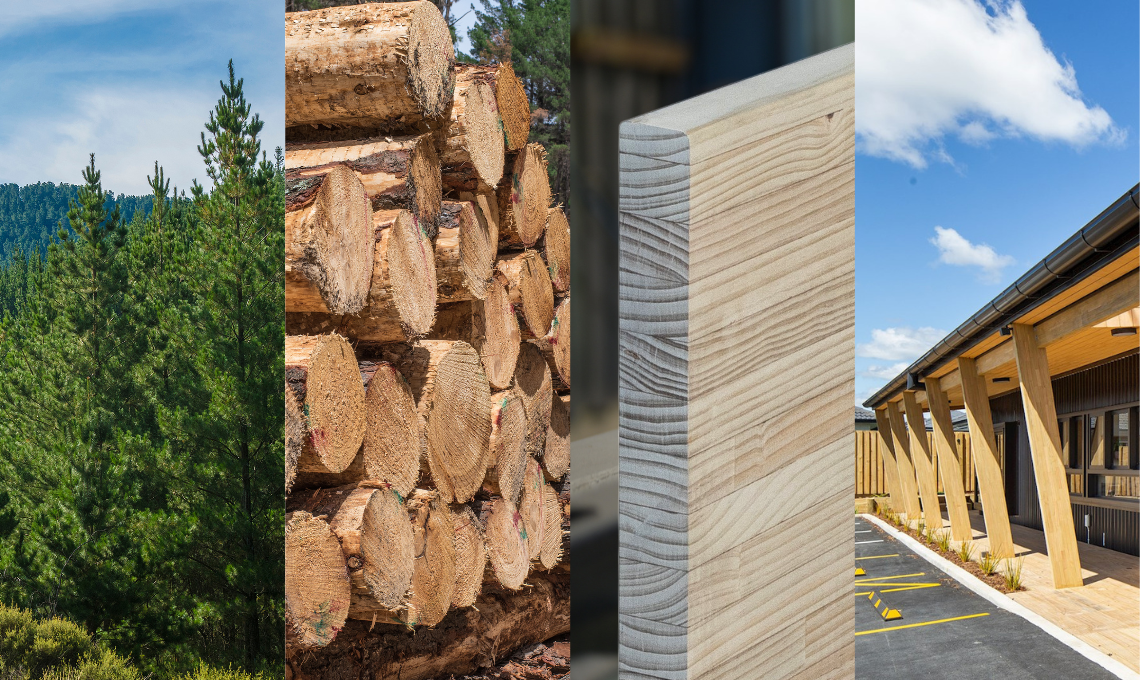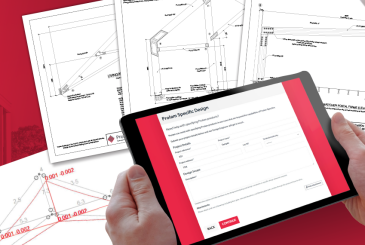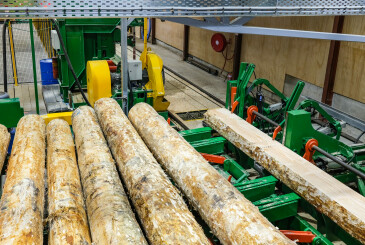5 Reasons Why Glulam Supports a Sustainable Build

Strong, durable, versatile and with solid eco-credentials,
engineered timber is in the spotlight as the demand for sustainable buildings and materials grows.
The New Zealand building design and construction industry has access to some of the most advanced and readily available engineered timber products and as Timber Unlimited says, we wholeheartedly agree: “More timber in more buildings is exactly what New Zealand needs”.
In this article, we look at the reasons why glue laminated (or glulam) timber supports a sustainable build, and how Prolam product innovations are providing architects, engineers, and builders with even more ways to incorporate glulam into residential and commercial buildings.
1. Wood is good
Timber is the only truly renewable building material - especially when it is sourced from responsibly managed forests which ensure a continuous cycle of growing, harvesting, and planting of trees.
An FSC Certified Manufacturer of 100% FSC and FSC mix timber products, Prolam’s glulam timber beams, posts, trusses, and portals are made from New Zealand plantation-grown radiata pine and Douglas fir, with most of the timber we source grown locally in the Tasman region.
The other major reason why timber is in such high demand as an environmentally sustainable building material is its contribution to the reduction of carbon in the environment. Trees absorb vast amounts of carbon from the atmosphere as they grow, and this carbon is then stored for the entire life of the homes and buildings the timber is used to build.
Wood is also biodegradable, which sets it apart from other building materials such as concrete, metal and plastics, which take an extremely long time to decompose. And a fact that many people are surprised to learn is that the glulam manufacturing process uses a greater amount of each tree – further minimising waste in line with sustainability principles.
2. Engineered for extra strength and durability
Glulam is made by bonding layers of kiln-dried, structural-grade timber together with durable adhesives. This makes glulam structural timber products stronger and more stable than solid timber – greatly minimising timber’s tendency to twist, split and shrink while retaining its aesthetic appeal.
This built-in strength also means glulam posts, beams, trusses, and portals have superior load-bearing capacity; and glulam beams and rafters have increased spanning capability.
Innovative glulam and steel ‘hybrids’ such as Prolam’s PLX20 Beam and PLX Portal have raised the bar even further. For design and construction professionals, they provide a high strength, more sustainably made alternative to steel beams and portals; and a spanning capability that eclipses traditional timber beams.
3. Energy efficiency and climate resilience
Building sustainably, as defined by BRANZ, is about “using practices and systems that lessen the impact on the environment, lower running costs and make homes healthy, accessible and comfortable”. This includes energy efficiency and building resilience against hazards such as earthquakes and fire.
Timber has a high insulation rating which means homes and buildings require less energy to maintain heating and cooling – contributing to reduced energy costs over the life of a building.
Meanwhile, research and building code development has proven that engineered timber is capable of meeting and exceeding the most demanding earthquake and seismic design requirements. And the latest information from Timber Unlimited highlights that mass timber structures where structural elements like beams and columns are made from glulam have “inherent fire resistance because surface charring of the wood allows an insulating layer to form, providing protection to the underlying timber”.
4. Eco-friendly manufacturing practices
Glulam beams are very efficient and far less emission-intensive to produce. The energy required to produce a glue-laminated beam from the log is only a fraction of the energy required to produce steel or concrete.
At Prolam, we consider every facet of our production processes on people and the environment. This includes seeking out and using timber treatments that are safer, more environmentally friendly, and effective in the protection of the timber against moisture and timber boring insects.
5. Cost-effective construction
As we know, environmental sustainability is only one facet of sustainability. Economics comes into it, too. Engineered timber, and Prolam’s glulam timber products which are designed to simplify construction, contribute to a far more cost, time, and energy-efficient build.
Up to 40% lighter than their steel equivalents Prolam glulam beams, trusses and portals can be installed without the need for extra labour, or specialised tools and heavy lifting equipment such as cranes or hiabs. And with builders reporting steel frames take up to two or even two and half times longer to install, this makes a significant difference in terms of building timeframes, labour costs and other associated building costs.
Timber also allows modifications and tweaks to layout during the construction process. Factory pre-fabricated and pre-cut steel frames do not.
Our commitment to sustainability
At Prolam, a commitment to sustainable building design and construction and a sustainable timber manufacturing industry is ingrained in everything we do.
This drives us to keep innovating and improving our products and our practices to support our own, our customers and our industry’s sustainability goals. This extends to our support for local employment and training opportunities, buying local and supporting New Zealand businesses across our supply chain, and our involvement with community organisations which contribute to the health, well-being and resilience of our community.
If you would like to know more about glulam and how Prolam glulam structural timber products support a sustainable build, call us on 03 526 7436 or send us an email. Our glulam experts are ready, willing and able to help you find the right solution for your residential and commercial building project.



